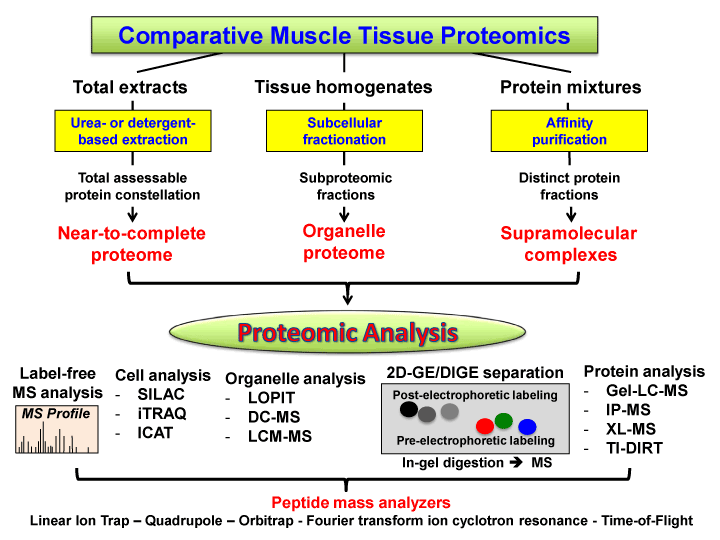
 |
| Figure 3: Flow chart outlining the various bioanalytical strategies used in comparative muscle tissue proteomics. Cellular analyses are often carried out by relative quantitation methods such as SILAC (Stable Isotope Labeling with Amino acids in Cell culture), iTRAQ (isobaric Tags for Relative and Absolute Quantitation) or ICAT (Isotope-Coded Affinity Tag). Organelle proteomics encompasses LOPIT (Localization of Organelle Proteins by Isotope Tagging), laser capture microscopy (LCM) and differential centrifugation (DC) approaches. The most powerful two-dimensional gel electrophoresis (2D-GE) technique used in comparative muscle proteomics is represented by fluorescence difference in-gel electrophoresis (DIGE). Protein affinity purification methods include immuno precipitation (IP), chemical crosslinking (XL) and the TI-DIRT method (Transient Isotopic Differentiation of Interactions as Random or Targeted). Distinct protein populations can also be conveniently analyzed by a combination of one-dimensional gel electrophoresis and liquid chromatography (LC), followed by mass spectrometry (MS). |